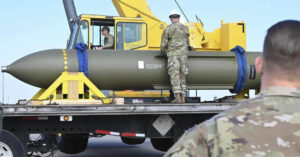We’ve poked holes in the US system and talked about Russian intelligence declining, so today, let’s look at what the US dominates: signal intelligence (SIGINT).
Next time you find yourself in the Netherlands, ask the local shopkeep how many languages he can speak…I bet it’s more than a few! On the flip side, if you head to the US, the answer is likely one…or two if you’re really lucky. That dichotomy summarizes America’s human intelligence (HUMINT) problem; a small recruiting pool requires lots of expensive training.
However, the US does excel on the SIGINT side of things. This is the monitoring, deciphering, and sifting of mass amounts of data (texts, emails, etc.) and tracing it back to the source. Then the human side of things identifies and extracts the most important stuff.
Since the US is such a significant world player, it’s become extremely good at this. But do they do it alone? No! The Americans partner with many allies, but four stand out: The UK, Australia, New Zealand, and Canada. With the US, they form The Five Eyes Alliance – a monitoring and sharing agreement that has given the US a good grasp on global signal intelligence.
Encryption has made this process a bit harder, but processing power and AI have helped the US lead the way in focused signal intelligence. This doesn’t mean that the Americans have abandoned HUMINT altogether; instead, SIGINT enhances and guides the strategy for the boots on the ground.
Prefer to read the transcript of the video? Click here
Here at Zeihan On Geopolitics we select a single charity to sponsor. We have two criteria:
First, we look across the world and use our skill sets to identify where the needs are most acute. Second, we look for an institution with preexisting networks for both materials gathering and aid distribution. That way we know every cent of our donation is not simply going directly to where help is needed most, but our donations serve as a force multiplier for a system already in existence. Then we give what we can.
Today, our chosen charity is a group called Medshare, which provides emergency medical services to communities in need, with a very heavy emphasis on locations facing acute crises. Medshare operates right in the thick of it. Until future notice, every cent we earn from every book we sell in every format through every retailer is going to Medshare’s Ukraine fund.
And then there’s you.
Our newsletters and videologues are not only free, they will always be free. We also will never share your contact information with anyone. All we ask is that if you find one of our releases in any way useful, that you make a donation to Medshare. Over one third of Ukraine’s pre-war population has either been forced from their homes, kidnapped and shipped to Russia, or is trying to survive in occupied lands. This is our way to help who we can. Please, join us.
CLICK HERE TO SUPPORT MEDSHARE’S UKRAINE FUND
CLICK HERE TO SUPPORT MEDSHARE’S EFFORTS GLOBALLY
TRANSCIPT
Everybody. Peter Zine here coming to you from just above Denver. It’s almost May, which means it’s almost hiking season almost now yet. Anyway, I am going to talk a little bit about the other side of the intelligence question. So we poked a few holes in the American system. We’ve talked about the leaks. We’ve talked about how the Russians do theirs and why they’re good at and whether maybe not as good as they used to be.
But I want to talk about how the United States does things. Now, the United States is a country that, while it is firmly bilingual, all the population as a whole is not particularly multilingual. So, you know, you go to the Netherlands and you’re a random shopkeeper who’s going to speak like six languages fluently and then, you know, be able to command a half a dozen more.
Most Americans are luckily like me, if they can spell in English. And the truly fortunate among us are bilingual with Spanish. And that’s about it. And that makes a very small pool of people to draw from if you want to do large scale intelligence operations that have a human element to it. And so all of our intelligence programs include some very, very, very intensive language training because not just not a lot of people come into the space with that, especially when you consider that one of the big pools for intelligence personnel are former military personnel.
And if you are working for four or eight, you know, two or three whatever tours. Language competency in a foreign language isn’t necessarily all that common. Or maybe you have one. And since American foreign policy changes every few years based on who the rivalry of the moment happens to be, you know, we’re always having to recreate that language, that language competency, which means that when it comes to humans, we’re not that great.
In addition, the United States is a very rich country and convincing someone to go abroad and basically work in a danger zone for danger pay is a bit of a stretch, whereas if you’re in a poorer country or a country that has a lot more geopolitical strife, less written in its immediate environment. It’s an easier sell to the population.
So small pool, expensive pool. And that pool still requires extensive training. So the United States just doesn’t excel at human intelligence HUMINT. What we do excel, however, SIGINT or signals intelligence. And that’s the idea that you intercept electronic signals, whether it’s in the form of a phone call or an email or text message or a tweet. And you trace it back to its source and you monitor it, hopefully without the other side realizing that you’re doing and you just kind of get the raw feed coming in.
This is then processed with computers, which eliminates, you know, 99.9% of everything is noise. And then that last point, 1% approximately goes through a human filter where it’s sorted out two levels of importance, because the United States is the largest first world country and the largest economy in human history. And because electronic communications are now omnipresent. The U.S. has gotten really good at this.
There was a program that the Europeans hated. A few years ago, they called it Echelon, where basically the United States use that signals intelligence dragnet to cover all global communications. And while it was never as far reaching as the Europeans thought, it was still pretty cool because all you need is a radio tower to collect the information. And if you throw in global cell towers plus global satellites, that is a lot of collection potential.
Now, do we do it alone? The answer to that is a hard no. We cooperate with any number of allies, but there are four that are far more important than the others put together. The United Kingdom, Australia, New Zealand and Canada. And collectively, these form what are called the Five Eyes. They cooperate on the gathering of intelligence, the analysis of what comes in, and then they share the findings among themselves.
And that makes these four countries the tightest allies we have. Yes, we fight. That’s what family does. But it does mean that the United States has a grip, a really good grip on signals intelligence the world over. Now, there have been some issues that have come and gone through the years that have made this more or less effective.
The general obsession with the corruption that started a few years ago certainly has made it more problematic. But a I in processing power has almost kept track with that. So the United States is able to, once it identifies a person of interest, apply a lot of supercomputer time in order to crack whatever the encryption happens to be. That means that the dragnet of covering all of humanity is pretty much nonexistent anymore.
But focused signals intelligence is wildly effective, and it remains the United States number one source of intelligence information. That doesn’t mean we don’t do HUMINT. It doesn’t mean that human intelligence is not important to the United States. It’s critical, especially for any ongoing military operation. So when it comes to locating suspects, but signals intelligence tells us where to look in the first place.
And then those fewer, though, those more rare human intelligence assets are deployed once we have a general idea of what sort of neighborhood we’re looking at. Okay. That’s it for me. Until next time.








